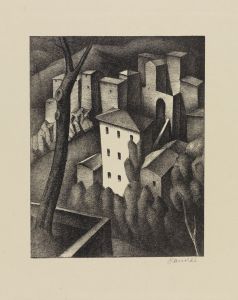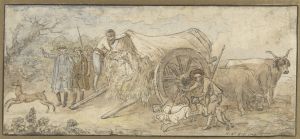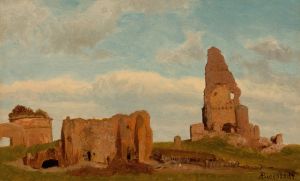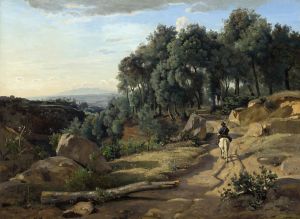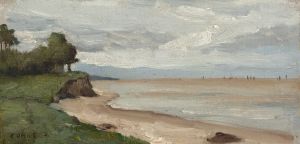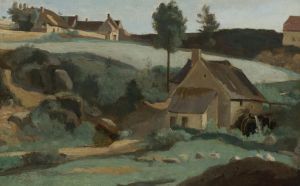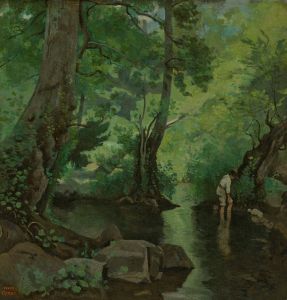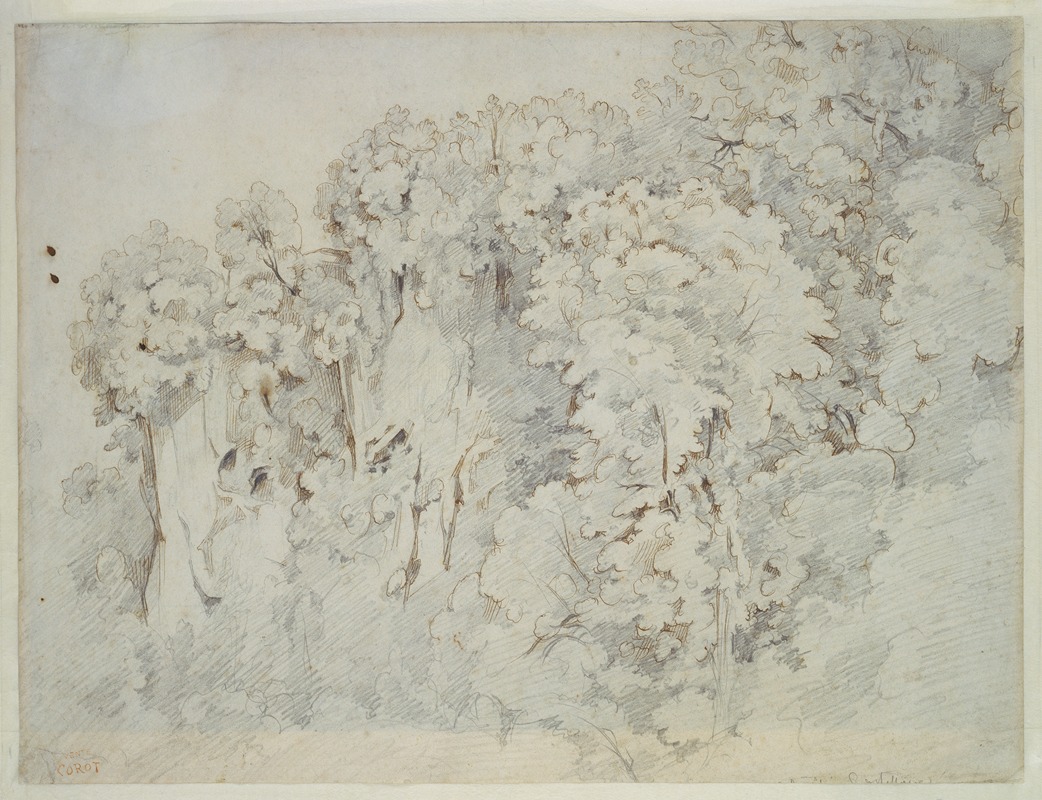
Study of a landscape near Cività Castellana
A hand-painted replica of Jean-Baptiste-Camille Corot’s masterpiece Study of a landscape near Cività Castellana, meticulously crafted by professional artists to capture the true essence of the original. Each piece is created with museum-quality canvas and rare mineral pigments, carefully painted by experienced artists with delicate brushstrokes and rich, layered colors to perfectly recreate the texture of the original artwork. Unlike machine-printed reproductions, this hand-painted version brings the painting to life, infused with the artist’s emotions and skill in every stroke. Whether for personal collection or home decoration, it instantly elevates the artistic atmosphere of any space.
Jean-Baptiste-Camille Corot's "Study of a Landscape near Cività Castellana" is a notable work by the French landscape painter, who is often associated with the Barbizon School and is considered a pivotal figure in the transition from traditional Neoclassical art to the plein-air practices that would later influence the Impressionists. This particular painting exemplifies Corot's dedication to capturing the natural beauty and atmospheric qualities of the Italian countryside, a subject that fascinated him throughout his career.
Corot painted "Study of a Landscape near Cività Castellana" during one of his trips to Italy, a country he visited multiple times between 1825 and 1828. These trips were crucial in shaping his artistic style, as they allowed him to study the effects of light and atmosphere directly from nature. Cività Castellana, located in the Lazio region of Italy, provided a picturesque setting with its rolling hills, ancient ruins, and vibrant natural scenery, which Corot found inspiring.
The painting is characterized by its delicate handling of light and shadow, as well as its subtle gradations of color, which together create a harmonious and serene depiction of the landscape. Corot's technique involved using soft, feathery brushstrokes to build up layers of color, giving the painting a luminous quality. This approach reflects his interest in capturing the transient effects of light and atmosphere, a hallmark of his later works.
Corot's landscapes are often noted for their poetic quality, and "Study of a Landscape near Cività Castellana" is no exception. The composition is carefully balanced, with a foreground that gently leads the viewer's eye into the middle ground and beyond to the distant horizon. The use of muted earth tones and a limited color palette enhances the sense of tranquility and timelessness in the scene.
While Corot's early works, including this study, were influenced by the classical landscape tradition, his time in Italy allowed him to develop a more personal and naturalistic style. He often painted en plein air, directly observing and recording the landscape before him. This practice was relatively innovative at the time and laid the groundwork for the Impressionist movement, which would emerge later in the 19th century.
"Study of a Landscape near Cività Castellana" is also significant for its role in Corot's artistic development. It represents a period when he was moving away from the more rigid compositional structures of academic painting and towards a freer, more expressive approach. This shift is evident in the way he captures the essence of the landscape rather than focusing on precise topographical details.
Corot's influence on later artists cannot be overstated. His ability to convey mood and atmosphere through landscape painting inspired a generation of artists, including the Impressionists, who admired his ability to capture the fleeting effects of light and color. Today, Corot is celebrated as a master of landscape painting, and works like "Study of a Landscape near Cività Castellana" continue to be appreciated for their beauty and innovation.
In summary, "Study of a Landscape near Cività Castellana" is a testament to Jean-Baptiste-Camille Corot's skill as a landscape painter and his contribution to the evolution of modern art. Through his sensitive portrayal of the Italian countryside, Corot not only captured the natural beauty of the region but also paved the way for future developments in the art world.






